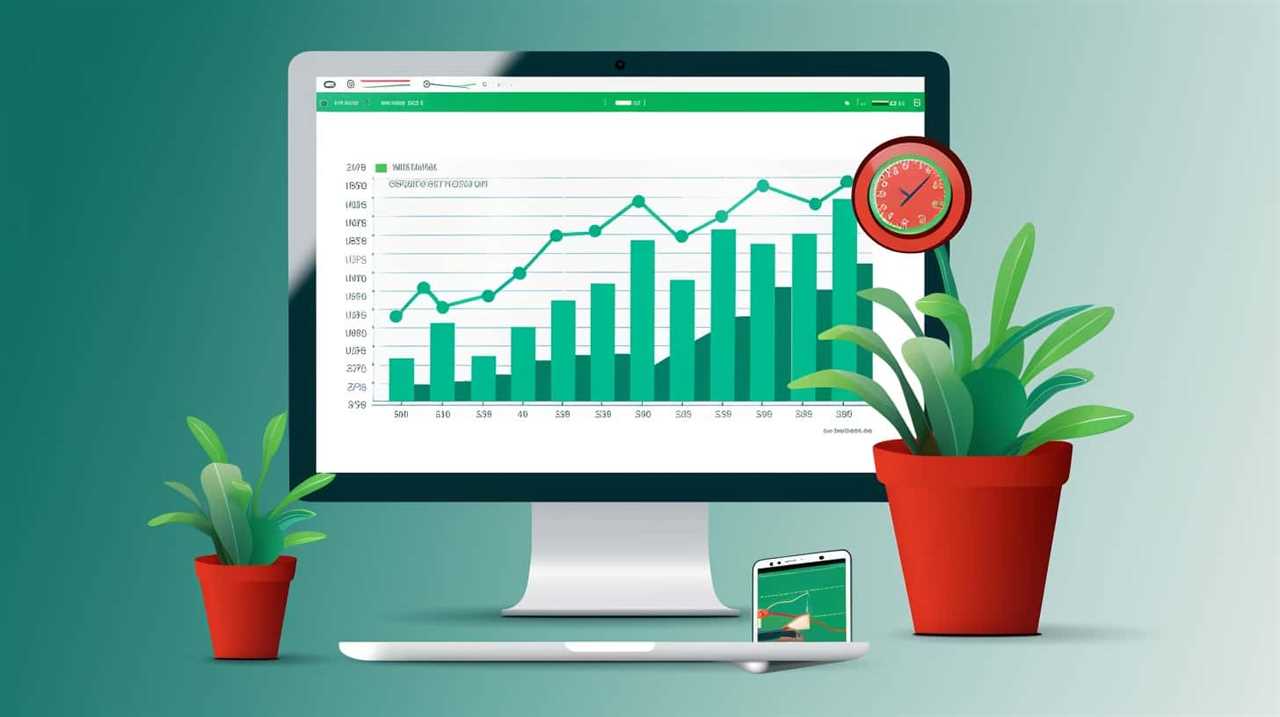You might be asking yourself, “What makes concentrating on Natural Language Processing (NLP) so important?”
Well, let me tell you, mastering NLP is crucial for anyone seeking to understand and harness the power of artificial intelligence.
NLP is a field that focuses on the interaction between computers and human language. It involves techniques and algorithms that enable computers to understand, process, and generate natural language.
With NLP, you can delve into speech recognition, machine translation, sentiment analysis, and even create intelligent chatbots. From healthcare to customer service, NLP has applications in various industries, revolutionizing the way computers interact with and understand human language.

So, if you want to unlock new possibilities and improve communication between humans and machines, mastering NLP is a must.
Key Takeaways
- NLP enables computers to understand, process, and generate natural language.
- The emergence of statistical approaches in the 1990s revolutionized NLP.
- NLP techniques include machine learning, statistical methods, and neural networks.
- Common NLP tasks include sentiment analysis, named entity recognition, and speech recognition.
History of NLP
Let’s delve into the history of NLP, starting with how it all began in the 1950s. Natural Language Processing (NLP) emerged as a field of study with the aim of enabling computers to understand and process human language.
The early years of NLP saw the dominance of symbolic approaches, where computers applied rules to decipher natural language. However, progress in machine translation, a key application of NLP, was slower than anticipated. In 1954, the Georgetown experiment attempted to achieve fully automatic translation, but the results fell short of expectations. This setback, along with the ALPAC report in 1966, which questioned the feasibility and progress of machine translation, resulted in reduced funding for NLP research.
During the 1960s, notable NLP systems such as SHRDLU and ELIZA were developed, marking significant milestones in the history of NLP. SHRDLU, created by Terry Winograd, showcased the ability to understand and manipulate objects in a block world using natural language commands. ELIZA, developed by Joseph Weizenbaum, simulated a conversation with a Rogerian psychotherapist, demonstrating the potential of NLP in human-computer interaction.

In the 1990s, the introduction of the statistical approach revolutionized NLP. This approach focused on analyzing large corpora of text to extract patterns and make predictions about language usage. It allowed for more flexible and intuitive language understanding, moving away from the rigid rules-based systems of the past.
Symbolic NLP Approach
To understand the Symbolic NLP Approach, you need to explore how computers applied rules and symbolic representations to process human language. In the symbolic NLP approach, computers used a set of predefined rules to manipulate symbols and understand natural language. This approach relied on hand-coding rules that dictated how the computer would process and interpret text. These rules were based on linguistic and grammatical principles, allowing the computer to analyze and comprehend the meaning of sentences and words.
Symbolic NLP systems utilized dictionary lookup to match words in the text with their corresponding meanings. This technique involved creating a database of words and their definitions, which the computer could reference during the processing of natural language. By using these rules and dictionary lookup, symbolic NLP systems aimed to achieve a level of natural language understanding.
The symbolic NLP approach was prevalent from the 1950s to the early 1990s and laid the foundation for subsequent developments in natural language processing. Although this approach had limitations, such as the need for extensive manual rule creation and the inability to handle ambiguity effectively, it paved the way for the development of more advanced NLP techniques and tools.

Statistical NLP Approach
The statistical NLP approach utilizes machine learning methods to analyze and understand natural language, achieving significant advancements in various NLP tasks. This approach has revolutionized the field of natural language processing (NLP) by enabling machines to comprehend and generate human-like language. By leveraging machine learning algorithms, data scientists have been able to develop models that can process and interpret large amounts of textual data, leading to valuable insights and improved performance in NLP applications.
To provide a deeper understanding of the statistical NLP approach, consider the following table:
| Statistical NLP Approach | Advantages |
|---|---|
| Utilizes machine learning algorithms | Enables automated analysis of natural language data |
| Achieves significant advancements in NLP tasks | Improves accuracy and efficiency in tasks like sentiment analysis and named entity recognition |
| Eliminates the need for elaborate feature engineering | Reduces human effort and simplifies model development |
| Offers flexibility and versatility | Allows for adaptation to different languages and domains |
The statistical NLP approach has proven to be a powerful tool in the field of NLP, providing researchers and practitioners with the means to tackle complex language understanding tasks. By harnessing the power of machine learning, this approach has opened up new possibilities and applications, making it an essential component in the toolkit of data scientists working in the field of natural language processing.
Neural NLP Approach
Now let’s explore the points associated with the Neural NLP Approach.

Firstly, neural models have proven to be efficient in natural language processing tasks, outperforming traditional statistical models.
Secondly, the neural NLP approach has led to significant advancements in language understanding, allowing for more accurate and contextually aware interpretation of text.
Lastly, it’s important to note that neural models require large amounts of training data to effectively learn and generalize patterns in language.
Efficiency of Neural Models
Improve the efficiency of your neural NLP models by leveraging deep learning techniques such as transformers. These techniques have significantly enhanced the performance of neural models in the field of natural language processing (NLP).

Here are two key ways to enhance efficiency:
- Contextual Embeddings: Incorporate contextual information into your NLP models by using contextual word embeddings. These embeddings capture the meaning of words based on their surrounding context, allowing for more accurate and contextually relevant predictions.
- Model Compression: Reduce the computational complexity and memory footprint of your neural NLP models by applying model compression techniques. These techniques aim to maintain model performance while reducing the number of parameters, layers, or other components of the model.
Language Understanding Advancements
Enhance your understanding of natural language by leveraging advancements in the neural NLP approach.
Neural NLP approaches, which rely on deep learning models and techniques such as neural networks and word embeddings, have revolutionized the field of natural language processing (NLP). These approaches have eliminated the need for elaborate feature engineering and have made significant progress in tasks like machine translation and natural language generation.
By capturing the semantic properties of words, neural NLP techniques enable machines to understand, process, and generate human-like language. This has led to practical applications such as automatic summarization, sentiment analysis, and named entity recognition.

The future of NLP lies in the development of algorithms based on conceptual metaphor and relative measures of meaning, aiming to enhance explainability and cognitive AI. Through the power of machine learning and deep learning models, neural NLP is pushing the boundaries of language understanding in AI.
Training Data Requirements
To optimize the performance of neural NLP models, a diverse and representative dataset is crucial for training. The training data for neural NLP consists of examples of human language and its various usage contexts. Here are two key requirements for training data in the neural NLP approach:
- Sufficient Quantity: Large amounts of training data are necessary to train neural NLP models effectively. The more data available, the better the models can learn the patterns and structures in language.
- Contextual Relevance: The training data should cover a wide range of language nuances and contexts. This ensures that the models can handle different language variations and understand the context in which words and phrases are used.
By fulfilling these requirements, the models can develop a deep understanding of language and perform well in various NLP tasks.
Moving forward, let’s now explore different approaches in NLP.

Approaches in NLP
The first step in understanding approaches in NLP is to explore different methodologies used in natural language processing.
NLP is a multidisciplinary field that combines techniques from linguistics, computer science, and artificial intelligence (AI) to enable computers to understand and process human language.
One of the prominent approaches in NLP is the use of machine learning methods. These methods involve training models on large datasets to learn patterns and make predictions.
Statistical methods have shown early successes in tasks like machine translation, while neural networks have revolutionized NLP by eliminating the need for manual feature engineering.

Language models, such as transformer models, have also gained popularity in recent years. These models use self-attention mechanisms to capture long-range dependencies and generate more coherent and contextually relevant responses.
Additionally, there’s been a shift towards incorporating unsupervised learning techniques, where models learn from unlabelled data, to overcome the limitations of relying solely on annotated datasets.
Common NLP Tasks
Now let’s explore two important tasks in natural language processing: sentiment analysis techniques and named entity recognition.
Sentiment analysis involves determining the sentiment or emotion expressed in a piece of text, which has various applications in social media monitoring and customer feedback analysis.

Named entity recognition, on the other hand, focuses on identifying and classifying named entities such as people, organizations, and locations, essential for information extraction and question answering systems.
These tasks play a crucial role in understanding and processing human language effectively.
Sentiment Analysis Techniques
Explore the effectiveness of sentiment analysis techniques in Natural Language Processing to gain valuable insights into customer sentiment and brand perception.
Sentiment analysis, a common NLP task, enables us to understand human language and analyze text data to better understand the emotions and opinions expressed.

Here are two key benefits of sentiment analysis techniques:
- Customer sentiment analysis: By applying sentiment analysis techniques, businesses can gain a deeper understanding of customer satisfaction levels, identify areas for improvement, and tailor their products and services accordingly. This helps in enhancing customer experience and loyalty.
- Brand perception analysis: Sentiment analysis allows companies to analyze consumer reviews, feedback, and social media posts to assess how their brand is perceived by the public. This information helps in shaping brand strategy, reputation management, and marketing campaigns.
Named Entity Recognition
To begin discussing the subtopic of Named Entity Recognition (Common NLP Tasks), let’s delve into the importance of this task in extracting specific entities from large volumes of unstructured text data. Named Entity Recognition (NER) is a crucial component of natural language processing (NLP) applications, enabling the identification and categorization of named entities such as people, organizations, and locations within text. This task plays a vital role in various fields, including computational linguistics, information retrieval, and electronic health records analysis. NER systems leverage advanced deep learning algorithms to improve accuracy and efficiency in recognizing named entities. Below is a table showcasing the types of entities commonly identified by NER:
| Entity Type | Example |
|---|---|
| Person | John Smith |
| Organization | |
| Location | New York |
| Date | January 1, 2022 |
| Medical Term | Diabetes |
NER is an essential task in NLP, enabling the extraction and analysis of specific entities within unstructured text data.
Text and Speech Processing
In an article titled ‘Natural Language Processing’, you’ll delve into the subtopic of ‘Text and Speech Processing’. This aspect of NLP involves the analysis and manipulation of both written text and spoken language. Text and speech processing is a fundamental area of language technology, focusing on tasks such as speech recognition, text-to-speech conversion, word segmentation, and morphological and syntactic analysis.

To engage you further, let’s explore two key subtopics within text and speech processing:
- Speech Recognition:
- Speech recognition is the process of converting spoken language into written text.
- Challenges include dealing with variations in pronunciation, background noise, and speaker accents.
- Speech segmentation, a crucial subtask, breaks down continuous speech into distinct segments for analysis.
- Text-to-Speech Technology:
- Text-to-speech technology transforms written text into spoken representation.
- It plays a vital role in enabling accessibility and communication for individuals with visual impairments.
- Advances in machine learning have improved the naturalness and expressiveness of synthesized speech.
In text and speech processing, other tasks like word segmentation, morphological analysis, and syntactic analysis help in understanding and generating language. These tasks contribute to semantic analysis, which aims to comprehend the meaning and context of words, sentences, and texts.
Morphological Analysis
To begin the discussion on Morphological Analysis, let’s address the first point: Word Stem Extraction. This process involves identifying the core or base form of a word by removing any affixes. By extracting word stems, we can reduce the complexity of vocabulary and gain insights into the underlying meaning of words.
Moving on to the second point, Inflectional Morphology Analysis, it entails understanding the different forms a word can take based on grammatical factors like tense, number, and gender. This analysis is crucial for accurate language processing, enabling systems to correctly interpret the context and convey meaning.

Lastly, we’ve Lexical Ambiguity Resolution, which focuses on disambiguating words with multiple meanings. This task is challenging due to the inherent complexity of language, but it’s essential for NLP applications to ensure precise understanding and generation of text.
Word Stem Extraction
You can use stemming and lemmatization techniques in natural language processing (NLP) to extract word stems for morphological analysis. This process is essential in improving the efficiency and accuracy of NLP applications that involve text analysis and machine translation.
Here are two sub-lists to engage your mastery-seeking audience:
Benefits of Word Stem Extraction for NLP:

- Enhanced Information Retrieval: Extracting word stems allows for a broader search scope, capturing different word variations and increasing the chances of finding relevant information.
- Improved Text Analysis Accuracy: By reducing words to their root form, stemming and lemmatization help eliminate noise and redundancy in the dataset, leading to more accurate text analysis results.
Techniques for Word Stem Extraction:
- Stemming Algorithms: Utilize various algorithms like Porter Stemming, Snowball Stemming, or Lancaster Stemming to remove prefixes and suffixes and obtain the word stem.
- Lemmatization Approaches: Contextual analysis is applied to determine the base or dictionary form of a word, considering its part of speech and surrounding words.
Incorporating word stem extraction techniques into NLP technology empowers algorithms to handle complex morphological structures and optimize language processing tasks.
Inflectional Morphology Analysis
By incorporating inflectional morphology analysis into your NLP techniques, you can gain a deeper understanding of word forms, affixes, and grammatical categories, allowing for more accurate and contextually relevant processing of human language.
Inflectional morphology analysis is a crucial component of NLP that focuses on the study of word structure and how it changes based on grammatical variations. It aids in tasks such as word segmentation, part-of-speech tagging, and lemmatization, enabling machines to comprehend the grammatical structure of a language.

This analysis is vital for tasks like machine translation, speech recognition, and text-to-speech synthesis. Neural networks are often used in inflectional morphology analysis to extract keywords and identify patterns in word forms.
Understanding inflectional morphology is essential for NLP to accurately process and interpret human language, paving the way for more natural and contextually relevant interactions.
Moving forward, let’s explore the next subtopic of lexical ambiguity resolution.
Lexical Ambiguity Resolution
Morphological analysis in NLP helps resolve lexical ambiguities and analyze word structure by utilizing techniques like tokenization, stemming, and part-of-speech tagging. With these techniques, machines can better understand the complexities of natural language.

Here are two key aspects of morphological analysis in lexical ambiguity resolution:
- Morphological Segmentation: NLP breaks down words into their constituent morphemes, aiding in the accurate interpretation of words. This segmentation allows machines to identify word boundaries and inflectional variations, enhancing language processing tasks.
- Stemming and Lemmatization: NLP techniques like stemming and lemmatization reduce words to their base or root forms, enabling machines to handle lexical ambiguities effectively. By reducing variations in word forms, machines can determine the correct meaning based on the context, improving accuracy in natural language processing tasks.
Morphological analysis is an essential component of NLP, empowering machines to comprehend and interpret the intended meanings of words within different contexts.
Syntactic Analysis
In the field of Natural Language Processing, achieving a deep understanding of sentence structure and grammatical components can be accomplished through syntactic analysis. Syntactic analysis, also known as grammatical analysis, is a fundamental technique in NLP that involves parsing sentences to identify the syntactic relationships between words and phrases. This analysis plays a crucial role in various NLP tasks, such as language understanding, machine translation, and text generation.
One of the key components of syntactic analysis is part-of-speech tagging, which assigns a grammatical category to each word in a sentence. This step helps in identifying the role of each word and provides valuable information for further analysis.

Another important technique used in syntactic analysis is dependency parsing, which aims to determine the grammatical relationships between words in a sentence. This process involves constructing a dependency tree that represents the syntactic structure of the sentence.
To illustrate the importance of syntactic analysis, consider the following example sentence: ‘The cat chased the mouse.’ Through syntactic analysis, we can identify that ‘cat’ is the subject, ‘chased’ is the verb, and ‘mouse’ is the object. This information can be used to extract meaning and facilitate further language processing tasks.
Lexical Semantics
Let’s now explore the key points of lexical semantics in the context of natural language processing.
Firstly, word sense disambiguation plays a crucial role in determining the correct meaning of words in different contexts, improving the accuracy of NLP tasks.

Secondly, semantic similarity measures enable us to quantify the similarity between words, facilitating tasks such as information retrieval and question answering.
Lastly, lexical resources, such as WordNet and ConceptNet, provide valuable information about word meanings, relationships, and semantic properties, which are essential for building robust NLP systems.
Word Sense Disambiguation
To understand word sense disambiguation in natural language processing, you need to grasp the concept of lexical semantics.
Word Sense Disambiguation (WSD) is a technique used in NLP algorithms to determine the correct meaning of a word based on its context. This is crucial for accurate interpretation of words in natural language.

WSD presents challenges due to the complexities and ambiguities of language. In order to tackle these challenges, NLP algorithms employ techniques such as grammatical analysis and neural learning.
Grammatical analysis helps in identifying the syntactic structure of sentences, while neural learning utilizes neural networks to learn and interpret the meaning of words.
These advancements, including the development of word embeddings, have significantly improved the accuracy and contextual relevance of WSD in natural language processing tasks.
Semantic Similarity Measures
You can assess the meaning of words and phrases in context and usage by employing semantic similarity measures in natural language processing (NLP).

These measures, a crucial aspect of lexical semantics within NLP, allow for the analysis of word meaning and relationships within a language system.
Semantic similarity measures play a vital role in various NLP tasks such as word sense disambiguation, information retrieval, and text summarization.
By understanding the contextual similarity between different words and phrases, NLP systems can enhance their ability to comprehend and generate human-like language.
Techniques such as word embeddings and neural network models have significantly advanced the capability of NLP systems to capture and measure semantic similarity.

These advancements contribute to the continuous improvement and refinement of NLP applications.
Lexical Resources for NLP
Exploring lexical resources is essential for understanding the field of lexical semantics in NLP.
Lexical resources, such as dictionaries and thesauruses, provide valuable information about word meanings and relationships. They play a crucial role in NLP algorithms by aiding in tasks like word sense disambiguation, sentiment analysis, and machine translation.
Additionally, word embeddings like Word2Vec and GloVe are indispensable lexical resources that capture the semantic properties of words. These resources enable machines to comprehend and process unstructured data by representing words as numeric vectors.

Leveraging lexical semantics in NLP assists in identifying named entities, extracting terminologies, and enhancing the precision of natural language generation.
Relational Semantics
Relational semantics in NLP focuses on analyzing the meaning and structure of sentences through techniques like word sense disambiguation and named entity recognition. By understanding the relationships between words and entities in a sentence, NLP can capture the semantic properties of language. To emphasize the significance of relational semantics in NLP, consider the following table:
| Techniques | Applications |
|---|---|
| Word sense disambiguation | Sentiment analysis |
| Named entity recognition | Topic modeling |
| Relationship extraction | Chatbots |
| Semantic role labeling | Virtual assistants |
| Coreference resolution | Language generation models |
These techniques are instrumental in enabling NLP to process and generate human-like language. With an understanding of the relationships and nuances of words and phrases, generative AI models can produce coherent and contextually appropriate text. Relational semantics techniques also support tasks such as sentiment analysis, topic modeling, and language generation, allowing machines to extract and comprehend the underlying meaning within text. By grasping the semantic properties of language, NLP can enhance natural language understanding and facilitate automatic differentiation. Therefore, relational semantics is a crucial component in the advancement of NLP technologies. As we delve into the subsequent section on discourse analysis, we will explore how NLP techniques further contribute to the comprehension and interpretation of language at a higher level.
Discourse Analysis
To further delve into the comprehension and interpretation of language at a higher level, it’s important to explore the subtopic of discourse analysis within the field of natural language processing. Discourse analysis plays a vital role in enabling computers to understand human communication and generate natural language.

Here are two key aspects of discourse analysis within NLP:
- Sentiment Analysis: Discourse analysis techniques are employed to identify and analyze the sentiment expressed in texts or conversations. By examining language patterns and contextual cues, sentiment analysis algorithms can determine the emotional tone and attitudes conveyed in the communication. This is crucial for applications such as customer feedback analysis, brand reputation management, and social media monitoring.
- Machine Translation: Discourse analysis is essential in machine translation systems to ensure accurate and coherent translations. By analyzing the structure and flow of the source text, NLP models can generate translations that maintain the intended meaning and convey the appropriate discourse relations. This helps in producing translations that are more contextually appropriate and natural-sounding.
Higher-Level NLP Applications
Analyzing discourse plays a crucial role in enabling you to understand and generate natural language in higher-level NLP applications. These applications encompass various NLP tasks that leverage the power of natural language processing and computer science algorithms.
Automatic summarization, for instance, condenses longer texts to cater to time-sensitive readers. By extracting entities like personal names and organizations from text, named entity recognition (NER) facilitates information retrieval and analysis.
Sentiment analysis and opinion mining, on the other hand, provide insights into the sentiment of a text, whether it’s positive, negative, or neutral. This information can be valuable for businesses to gauge customer satisfaction or understand public opinion.

Machine translation, another higher-level NLP application, enables seamless communication and understanding across different linguistic groups. By converting information into natural language, natural language generation allows machines to produce human-like text, which has applications in chatbots, virtual assistants, and content generation.
Achieving these higher-level NLP applications requires robust algorithms and techniques that encompass various subfields of computer science, such as machine learning, deep learning, and natural language understanding. Mastery in these areas is essential to develop and deploy effective solutions in the realm of natural language processing.
Future Directions in NLP
To explore the future directions of NLP, you need to delve into its potential for multilingual and multimodal communication, as well as the shift towards eliminating symbolic representations.
In the coming years, businesses will increasingly rely on NLP to handle a wide range of languages and modes of communication. NLP will enable businesses to effectively analyze and process multilingual content from sources such as social media, allowing them to gain valuable insights and adapt their strategies accordingly.

Additionally, the integration of multimodal communication, which combines different forms of input such as text, speech, and images, will enhance the capabilities of NLP systems, making them more versatile and adaptable to various communication channels.
Another significant direction in NLP is the elimination of symbolic representations. This shift opens up opportunities for the development of more advanced cognitive NLP algorithms that are based on conceptual metaphor and relative measures of meaning. By moving away from traditional symbolic approaches, NLP can tap into the nuances and complexities of natural language, enabling more accurate and nuanced language understanding.
In summary, the future of NLP holds great promise for businesses across various industries. The ability to handle multilingual and multimodal communication will empower businesses to better engage with their customers on platforms such as social media. Furthermore, the shift towards eliminating symbolic representations will pave the way for more advanced cognitive NLP algorithms, enabling deeper and more sophisticated language understanding.
As businesses continue to leverage NLP for customer service and other applications, these future directions in NLP will undoubtedly play a crucial role in shaping the field.

Frequently Asked Questions
Is NLP a Form of Ai?
Yes, NLP is indeed a form of AI. It falls under the AI umbrella as it focuses on enabling computers to understand and interact with humans in a more natural way.
By processing and understanding human language, NLP contributes to improving communication between humans and machines.
Its applications in various fields, such as medical research, search engines, and business intelligence, demonstrate its significance and effectiveness as a subset of AI.
What Are the 5 Steps in Nlp?
To master natural language processing, you must understand the five crucial steps.

First, data preprocessing cleans and organizes the text.
Next, syntax analysis breaks down sentences into meaningful components.
Then, semantics analysis focuses on understanding the structure and meaning of sentences.
This is followed by deep learning, where patterns in data are used to improve understanding.

What Are NLP Algorithms?
NLP algorithms are computational models designed to understand and process human language. They enable machines to comprehend and generate text, making it possible to perform tasks like language translation, sentiment analysis, and text summarization.
These algorithms have evolved from rule-based approaches to more advanced deep learning techniques, which allow for more flexible and intuitive language understanding. By leveraging statistical and neural network methods, NLP algorithms eliminate the need for complex feature engineering and enable machines to process and interpret natural language more efficiently.
Is It Hard to Learn Nlp?
Learning NLP can be a challenging endeavor. It requires dedication, determination, and a deep dive into the complexities of language processing.
Developing a strong understanding of syntax and semantics analysis, along with the use of NLP techniques like tokenization and part-of-speech tagging, is crucial.

The field’s constant evolution demands continuous learning and adaptation.
While NLP has its limitations in interpreting sarcasm, emotion, slang, and context, mastering it opens doors to various applications in diverse fields.
Conclusion
In conclusion, Natural Language Processing (NLP) has significantly advanced the field of artificial intelligence by enabling computers to understand and interact with human language.
Through techniques such as speech recognition and sentiment analysis, NLP has revolutionized industries like healthcare and customer service.

For example, a hypothetical case study could involve a chatbot in a healthcare setting that uses NLP to accurately understand and respond to patient inquiries, improving the efficiency and accessibility of healthcare services.
The future of NLP holds even more exciting possibilities for enhancing human-machine communication.










